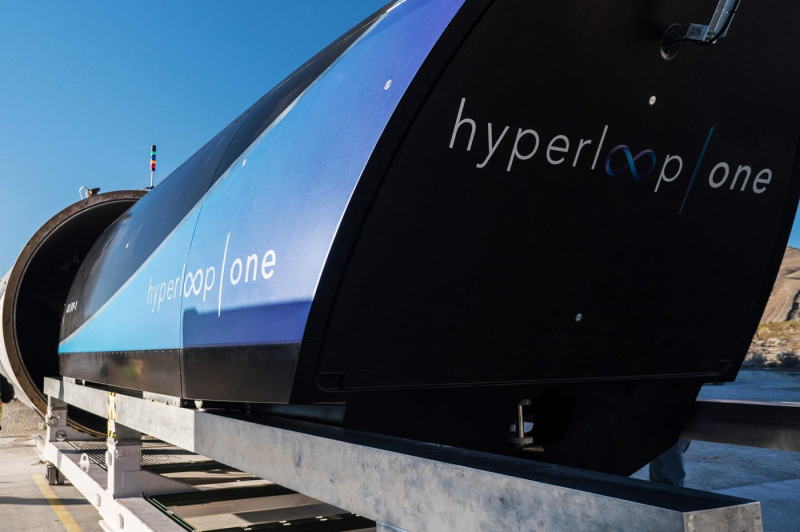
© Hyperloop One
Ah… the sea serpent of the hyperloop. Conceptualized in 2013 by Elon Musk, the system was presented as an innovative evolution of land transport. Very concretely it involved laying long metal tubes over long distances equipped with magnetic levitation tracks and trains.
Thanks to these tubes it became possible to lower the pressure to a level close to the conditions found in the highest layers of the atmosphere. In other words, not necessarily a total vacuum but still a partial vacuum – with a pressure chosen as the best compromise between reduced air resistance and the energy necessary to maintain these conditions.
End clap for Hyperloop One
The combination of this partial vacuum and magnetic levitation promises to achieve a speed on earth close to that of airliners, all using electricity rather than kerosene. And depending on very little energy. Enough to not only provide an alternative to high-speed trains (which offer travel up to a speed of 350 km/h or even a little more), to simple maglevs (rarely deployed, because they are very expensive), and to aviation on flights of less than 1,000 to 1,500 km (very polluting).
But also a whole new conceptualization of land transport. Indeed, it becomes possible to create an advanced system of capsules that can assemble into a train or detach along the way to reach different destinations. Some players even imagine solving the last mile equation with capsules capable of taking travelers directly from their homes.
The icing on the cake: in his concept Elon Musk presented this technology as very inexpensive to install and operate. All covered with solar panels to minimize the impact on the electricity network. The problem is that despite strong interest and the development of a multitude of startups, the concept never really took off.
And it is in this context that we learn that Hyperloop One, one of the most prominent players, is on the verge of going out of business according to a Bloomberg news. This isn't entirely a surprise: After Richard Branson took control of the company, an ambitious project was planned in Saudi Arabia. But the latter “dared” criticize the prince after the murder of Jamal Khashoggi in 2018 – which put an end to the project.
Since then Hyperloop One has been more or less dormant. According to Bloomberg, one of the investors, the Port of Dubai (DP World), which subsequently took control of the startup and reoriented its activities on cargo transport, will keep control of all intellectual property. While the rest of the company, including a test track in the suburbs of Las Vegas, will be completely resold.
📍 To not miss any news from Presse-citron, follow us on Google News and WhatsApp.
< /blockquote>
[ ]

